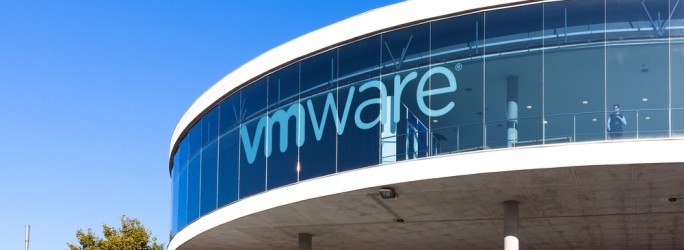Private mobile networks, Open RAN and edge services are key growth areas of the telco market, and market developments in all were a feature of the past week. Business technology journalist Antony Savvas tracks the news.
5G consortium
The 5G Consortium has been formed to bring together vendors and the service channel to promote the deployment of private mobile networks.
The 5G Consortium includes consultants, systems integrators and post-deployment specialists that can help match enterprise network needs with radios, devices and appliances that are interoperable.
“Some companies aren’t sure what technologies are needed, the products that are available and which work together, or the companies that are available to help design, implement and maintain a private network,” says Simon O’Donnell, president of Athonet USA.
“The 5G Consortium simplifies the process and helps enterprises understand what is needed and to find the right solution.”

Harald Remmert, chief technology officer for cellular solutions at Digi International, adds, “Digi‘s IoT connectivity solutions connect people, places and machines in the most demanding environments reliably and securely. We are inspired by the 5G Consortium’s vision to accelerate private 4G/5G Networks adoption.
“We believe it will be a catalyst for remote connectivity, infrastructure modernisation and digital transformation.”
Bearcom, BEC Technologies, BLiNQ Networks, Federated Wireless, Fortress Solutions, MultiTech Systems, Supermicro Computer and Syniverse Technologies are among the other founder members of the 5G Consortium.
While the telcos themselves don’t seem to be part of the Consortium party so far, no doubt they will be following developments closely, to make sure they are not carved out of any significant private mobile contract business.
NEC aspires in open RAN

Japan’s NEC Corporation has made a key move in delivering end-to-end Open RAN ecosystems to operators, including system design and integration for legacy networks, by acquiring Ireland’s Aspire Technology.
Aspire is a system integration specialist across the full network lifecycle for legacy and open architectures, from 2G to 5G, supplying telcos globally. NEC will combine it with its Open RAN hardware and software components, and transport, core and automation/orchestration services.
Helpfully for NEC, in a fast moving and growing market, Aspire Technology has been an advocate for Open RAN from the outset, and has built an Open Networks Lab, enabling partners to fast-track development, integration and the testing of open networks.
Naohisa Matsuda, general manager of NEC’s 5G strategy and business, confirms that having the right tin/systems doesn’t guarantee a lead in an evolving telecoms market like Open RAN. Matsuda says, “The system integration business is all about people and expertise. The strong capabilities and the deep pool of talented engineers at Aspire Technology, combined with its portfolio of technology solutions and applications, is a big step forward for our open networks strategy.

“NEC is now better prepared than any supplier to integrate disaggregated network components into a well-tuned ecosystem.”
NEC’s acquisitive strategy when it comes to talent follows Broadcom’s much bigger move to capture VMware, a key player in Open RAN, along with most other transport technologies at the edge.
Cloud providers leave opportunities at the edge
Speaking of the edge, it seems the hyperscalers aren’t as all-powerful as it seemed.
Microsoft has been forced to throttle the availability of its Azure cloud service to new customers in the UK, because of a lack of capacity.
While the cloud service provider was able to agree to host the IT systems for the entire Ukraine government across its European data centres, to prevent that country’s data going astray as a result of Russian missile strikes on local governmental data centres, it now doesn’t have enough capacity to look after the needs of commercial customers.

The UK’s Telegraph newspaper reports that local IT managed service provider QuoStar approached Microsoft for hosting capacity at its UK data centres, only to be refused.
QuoStar was told by Microsoft, “Unfortunately, due to high demand in this region, we are not able to approve your request at this time.” Microsoft, which, according to analysts, has been hoovering up new public cloud services business against main rival Amazon Web Services (AWS) over the last year, could only offer QuoStar a “bi-monthly update” on whether services would be available in future.
Neil Clark, QuoStar’s director of cloud services, told the Telegraph that public promises of “endless capacity” from Microsoft and its rivals “masked the reality”.
He says, “Businesses need to start realising that these aren’t endless supplies. You’ve got to treat cloud companies in the same way that you would do a smaller supplier.”
Microsoft confirms high growth in demand for its cloud services has taken its toll on service capacity. A spokesperson told the newspaper that “we’ve taken steps to address customer increases in capacity while also expediting server deployment in our data centres”.
While it, and potentially Microsoft’s rivals are filling in the holes, telcos should carry on ramping up their capacity at the edge, where much of the service delivery for new latency-critical applications is now being supported anyway.

Whether it be infotainment in cars, artificial intelligence-driven analytics for high street retail, supporting virtual reality in the evolving metaverse or delivering applications or content in other areas, telcos at their natural position at the edge are in pole position.
The edge was always going to be a battle area in new service provision between cloud providers and CSPs (communication services providers), and a growing number of telcos have already made alliances with the likes of Microsoft Azure, AWS and Google Cloud to make sure they benefit from new markets being created from the global Internet of Things (IoT) and 5G.
But, it seems, when it comes to meeting customer demand, it may now be the case that hyperscalers need the telcos rather more than many thought.
The author is Antony Savvas, a global freelance business technology journalist.
Comment on this article below or via Twitter: @VanillaPlus OR @jcvplus






